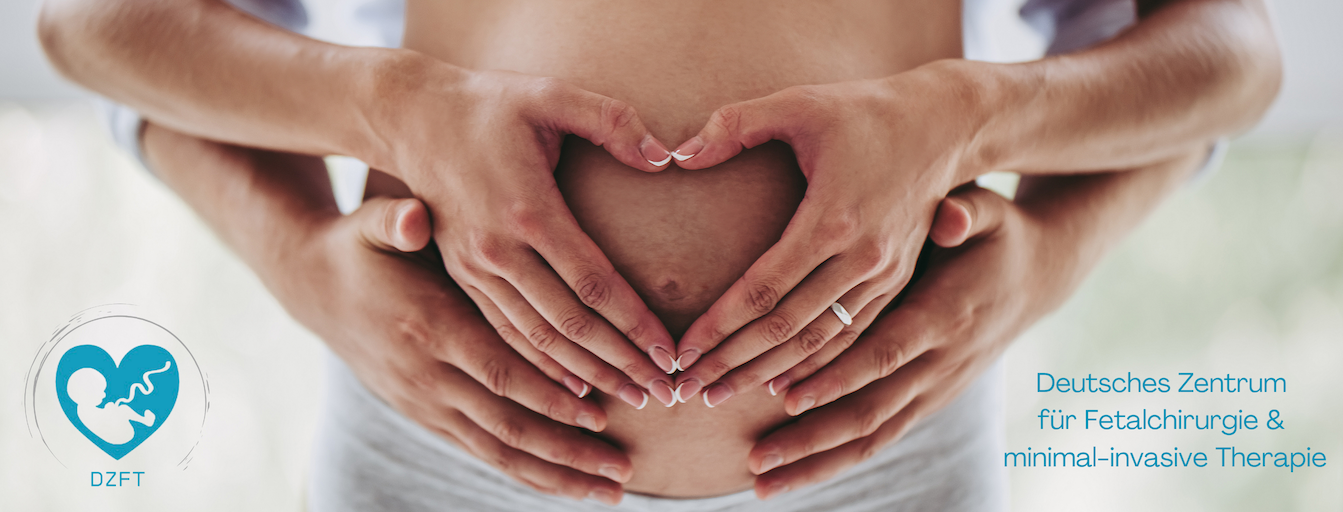During routine ultrasound examinations during pregnancy, special attention is paid to the baby’s heart. In some cases, it is found that the unborn baby has an aortic arch that is significantly too small – this can affect the entire arch or just the end section (the isthmus). If there is severe narrowing, this is a serious condition for the child: surgical or pediatric cardiological assistance will be required within the first few days of life.
Other terms for this spectrum of malformations in the area of the large artery include coarctation, coarctatio aortae, aortic isthmus stenosis, and aortic arch hypoplasia.
A non-invasive drug treatment method that can help unborn children with an undersized aortic arch even shortly before the end of pregnancy was developed by Prof. Thomas Kohl at the DZFT almost 10 years ago: chronic intermittent materno-fetal hyperoxygenation, known as “oxygen therapy” or the “Kohl procedure” for short. The procedure is very simple and achieves significant catch-up growth of the aortic arch even in the last weeks of pregnancy.
The principle of oxygen therapy is easy to understand: before birth, the pulmonary vessels of the unborn child are still narrow. This makes sense because the child is not yet breathing independently, but exchanges oxygen and carbon dioxide via the placenta. Immediately after birth, however, these vessels must expand significantly so that the oxygen contained in the air can enter the child’s blood via the airways and alveoli. The strongest trigger for this vital pulmonary vasodilation is oxygen itself. We make use of this mechanism in “oxygen therapy.”
When a pregnant woman breathes in oxygen, a small portion of it passes through the placenta to her unborn child. In many cases, this small portion is sufficient to cause a pronounced dilation of the lung vessels and an increase in pulmonary blood flow in babies with a too small aortic arch.
This automatically causes the blood to return to the left atrium via the pulmonary veins and from there preferably through the left side of the heart into the aorta. The significantly stronger inflow also stimulates growth in the areas that are too small.
A controlled study* published in December 2016 confirms that the Kohl procedure can prevent the otherwise necessary surgical intervention on the aortic arch in the majority of affected children. Forty-eight fetuses with the corresponding diagnosis participated in the study. The unborn children were divided into two groups: one group received prenatal oxygen therapy, the other did not.
The results were clear. After birth, 75% of the babies who had not been treated with the Kohl procedure required heart surgery. In contrast, only 20% of the newborns who received oxygen therapy required surgery on the aortic arch. This is a convincing advantage of the new treatment.
For further information and advice, we are available daily between 10 a.m. and 5 p.m. on (0175) 597-1213 or by email. You are also welcome to leave us your name and a telephone number where we can call you back.
*Zeng S et al. Sustained maternal hyperoxygenation improves aortic arch dimensions in fetuses with coarctation. Sci Rep 6, 39304; doi: 10.1038/srep39304 (2016)
Note: The content of our website is for informational purposes only and is not intended to replace personal consultation with us or other recognized medical professionals in this field. For all individual questions and decisions regarding your health and that of your child, we strongly recommend that you and your family members consult us, your doctor, and/or other experts in person.
